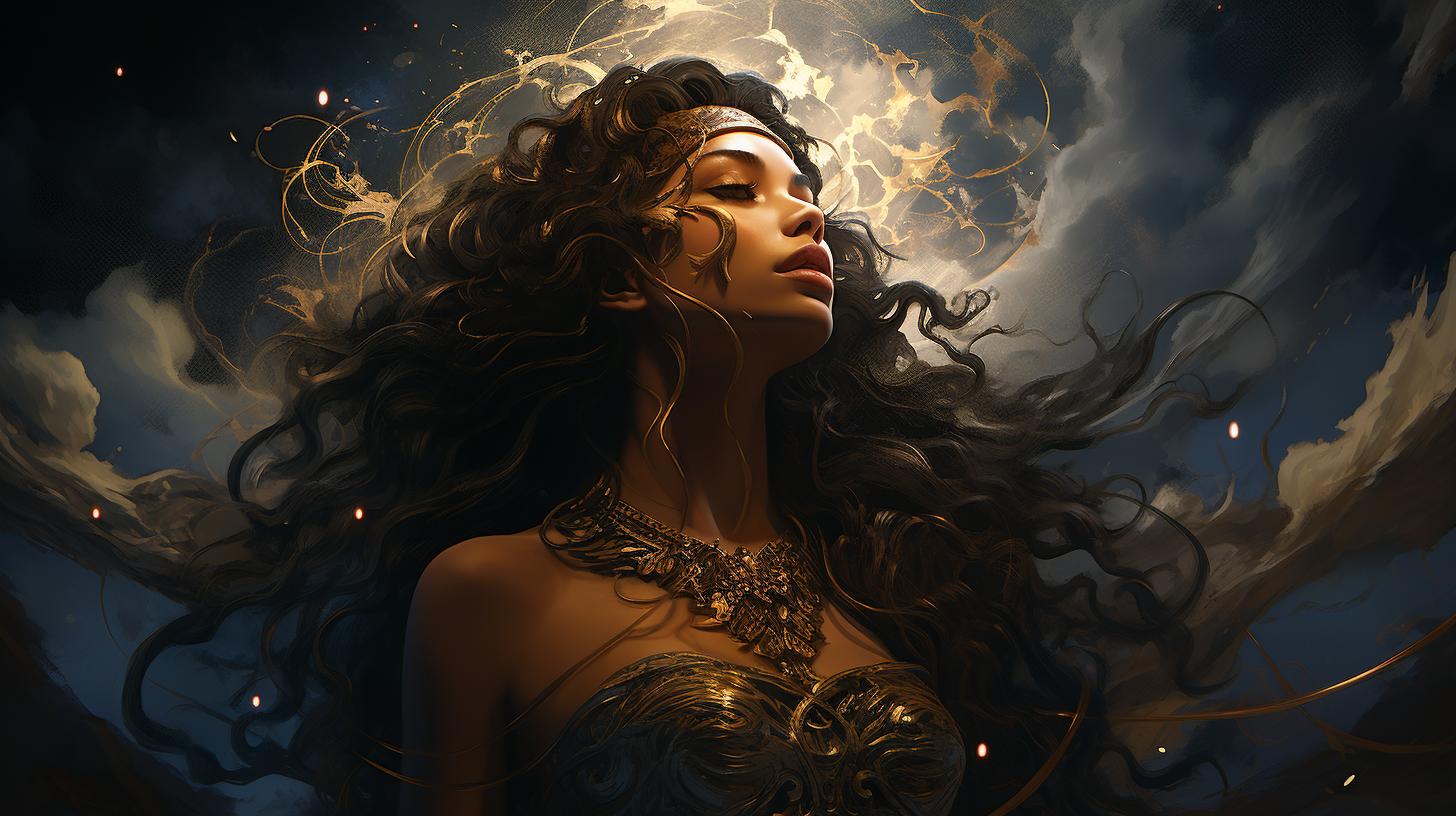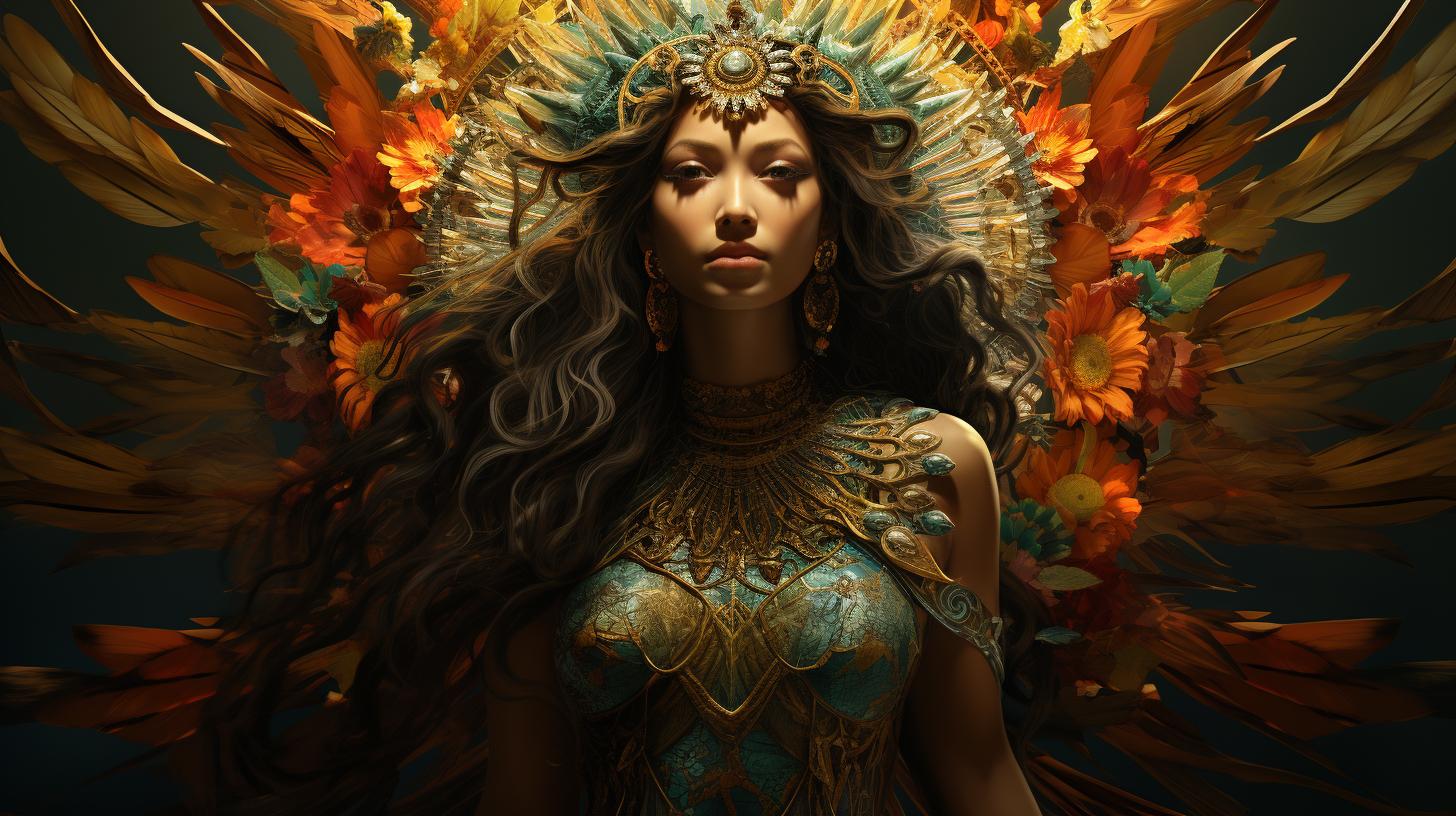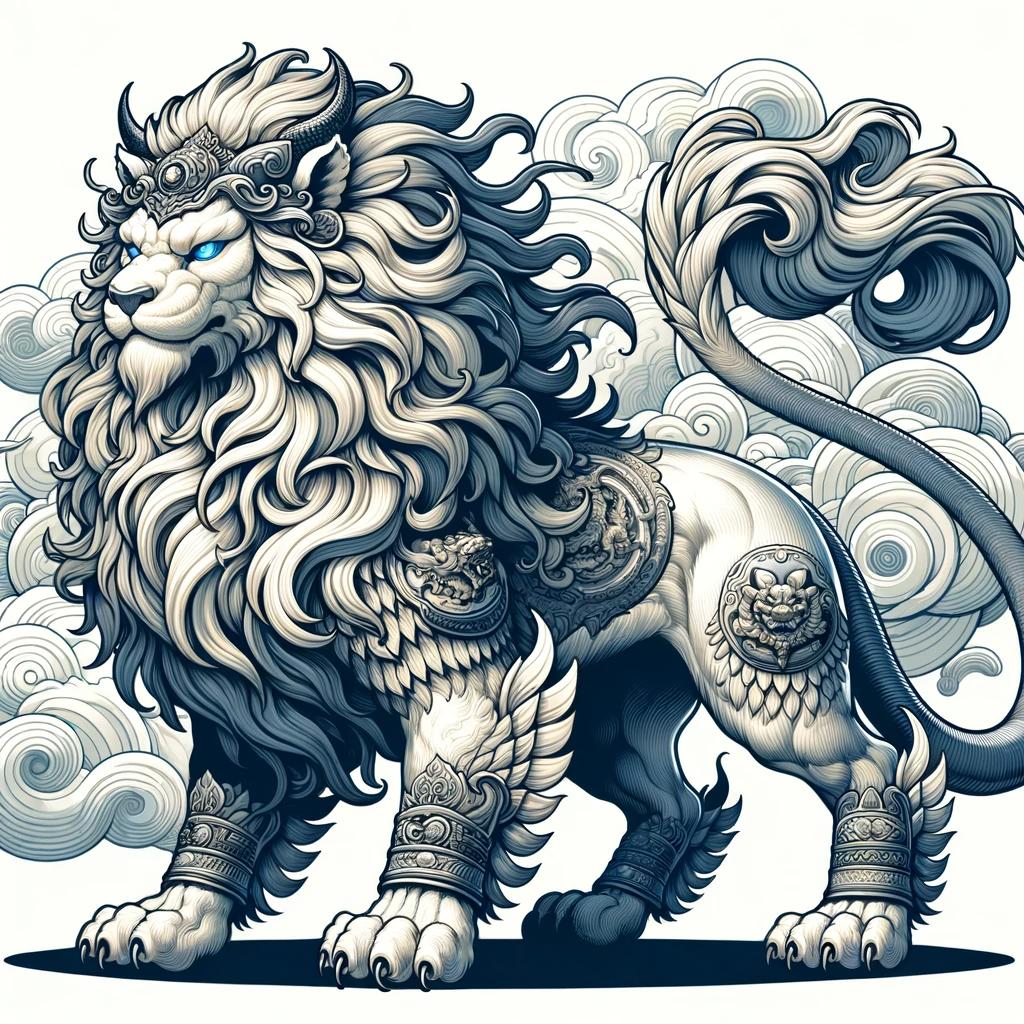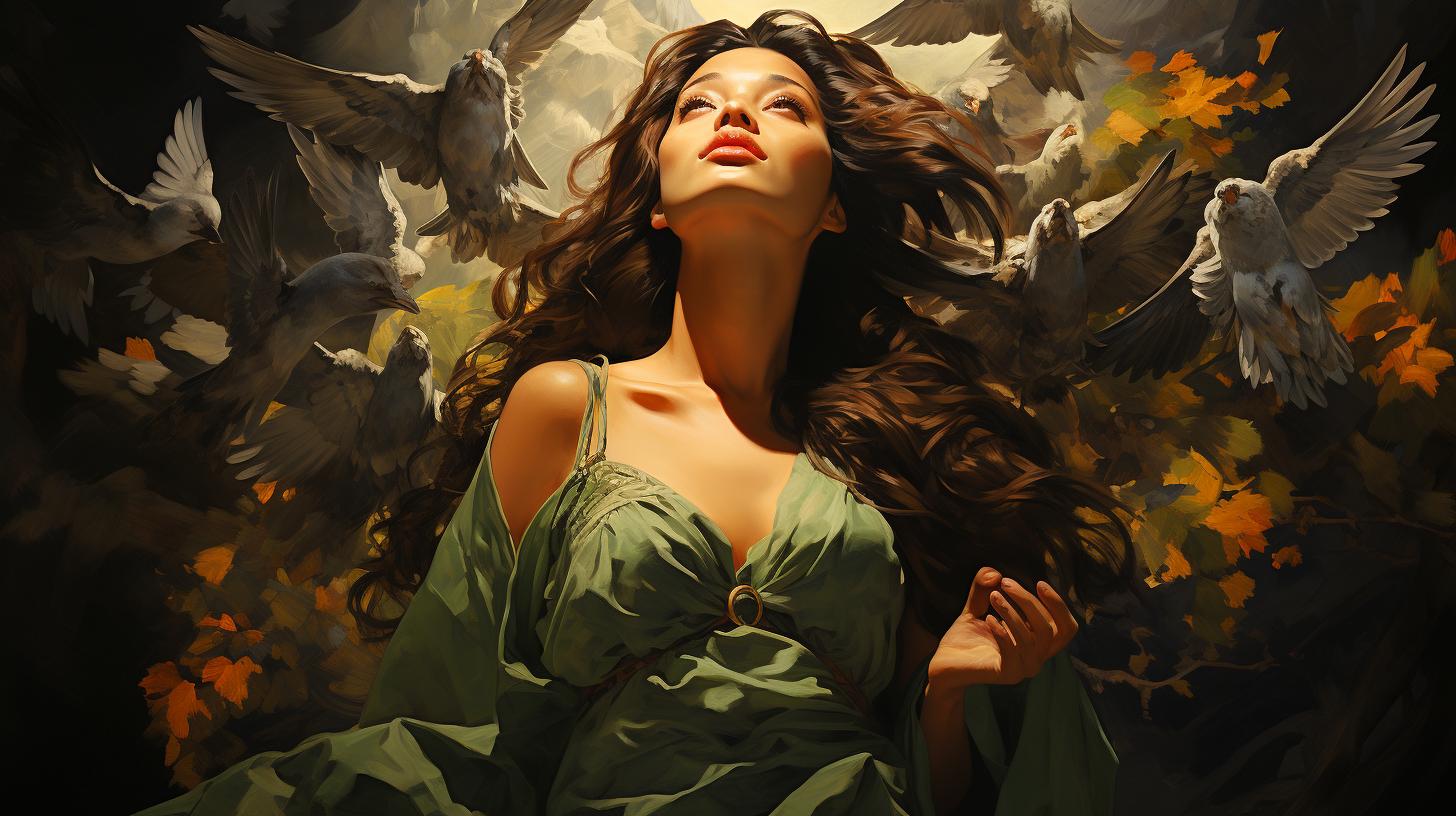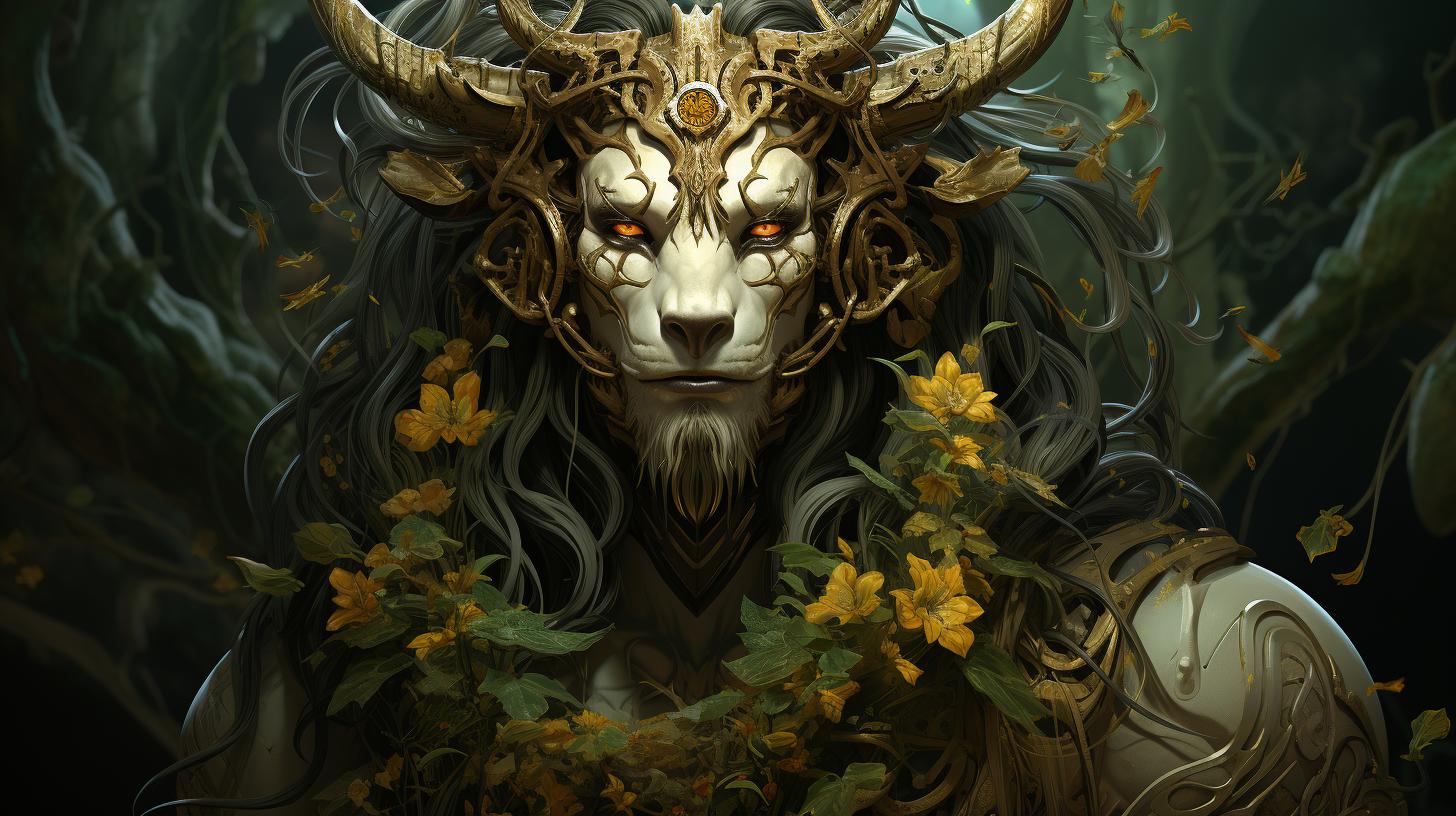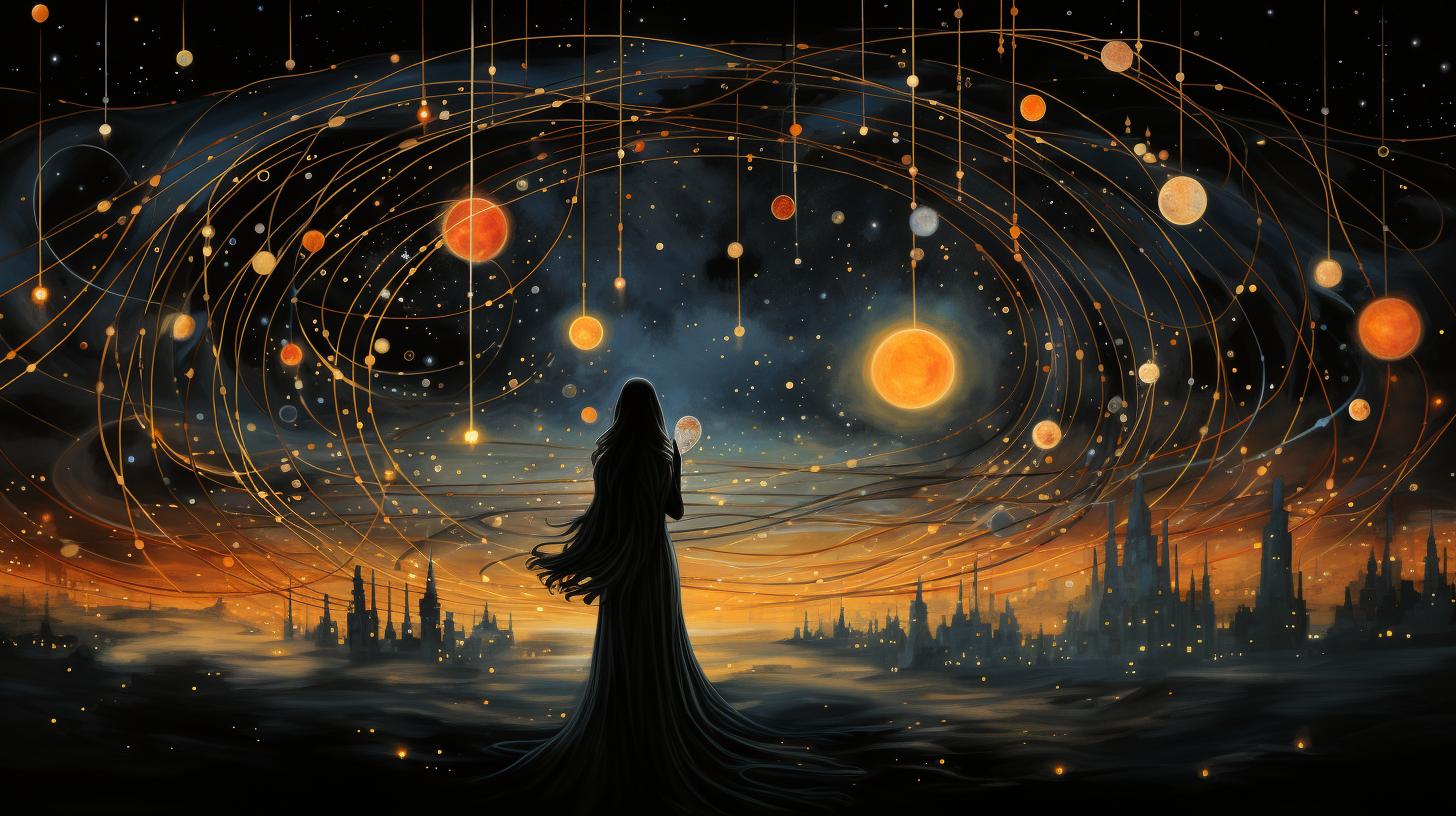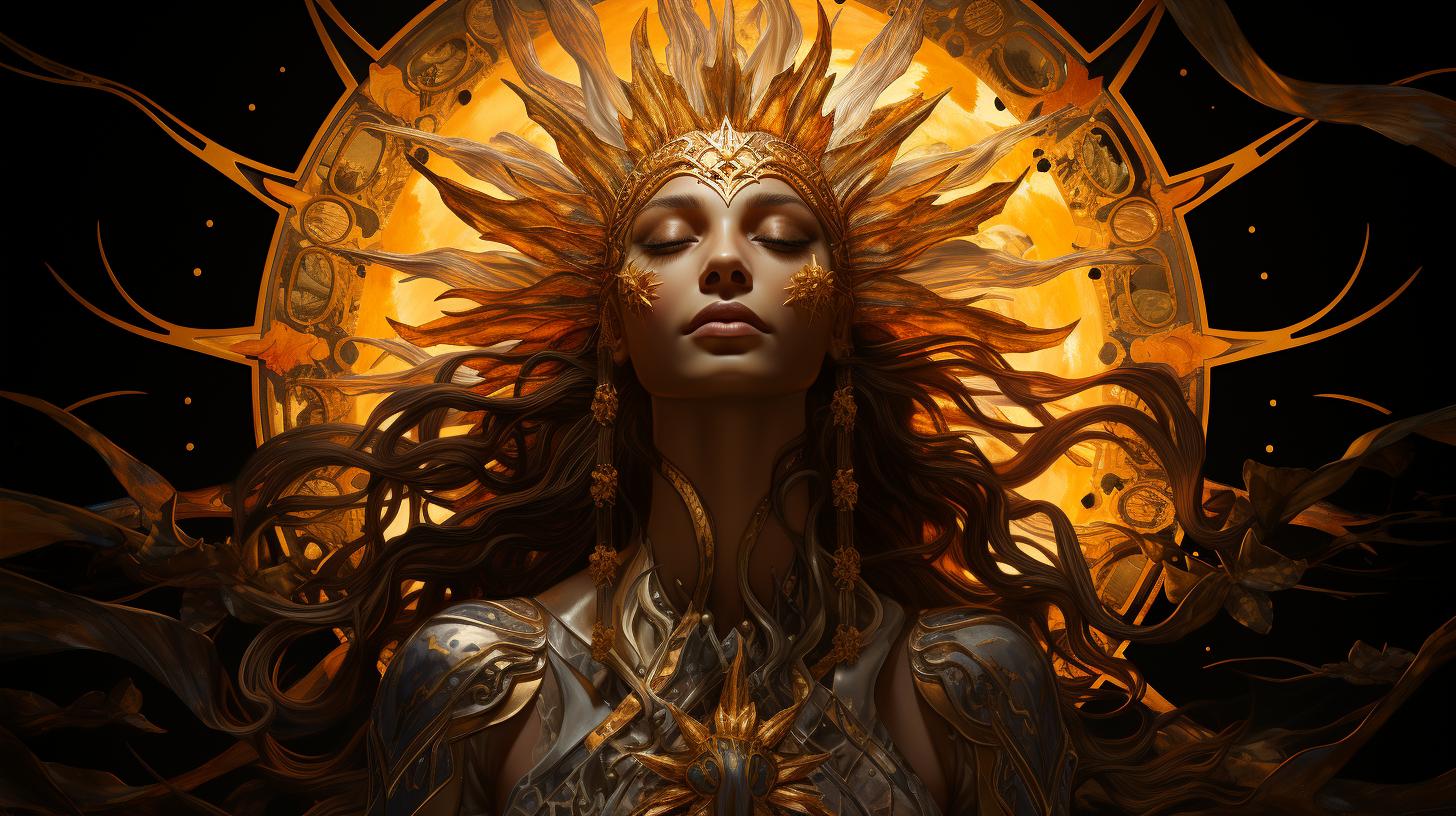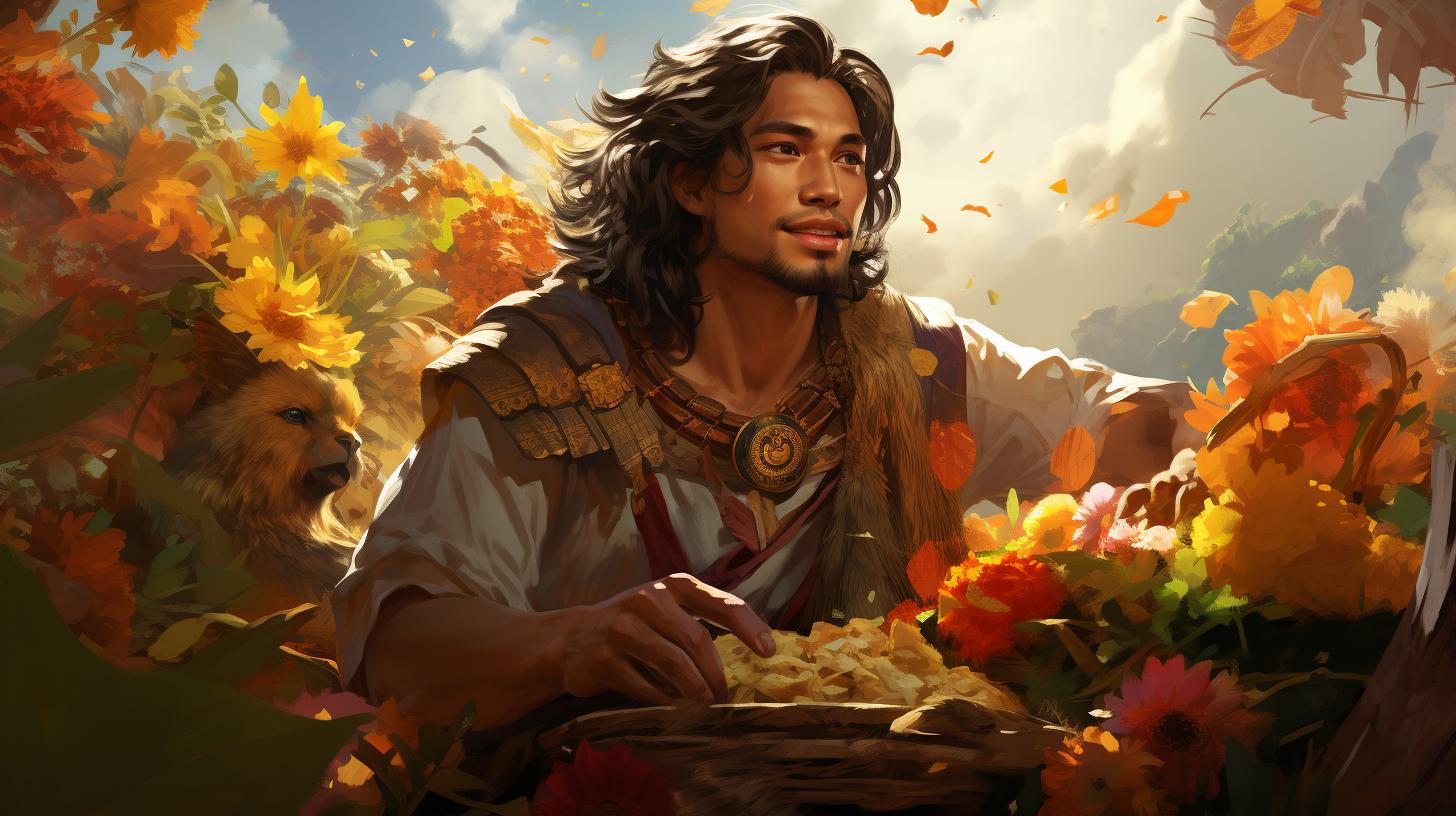Mayari: The Enchanting Filipino Goddess Revealing Her Mythical Power and Beauty
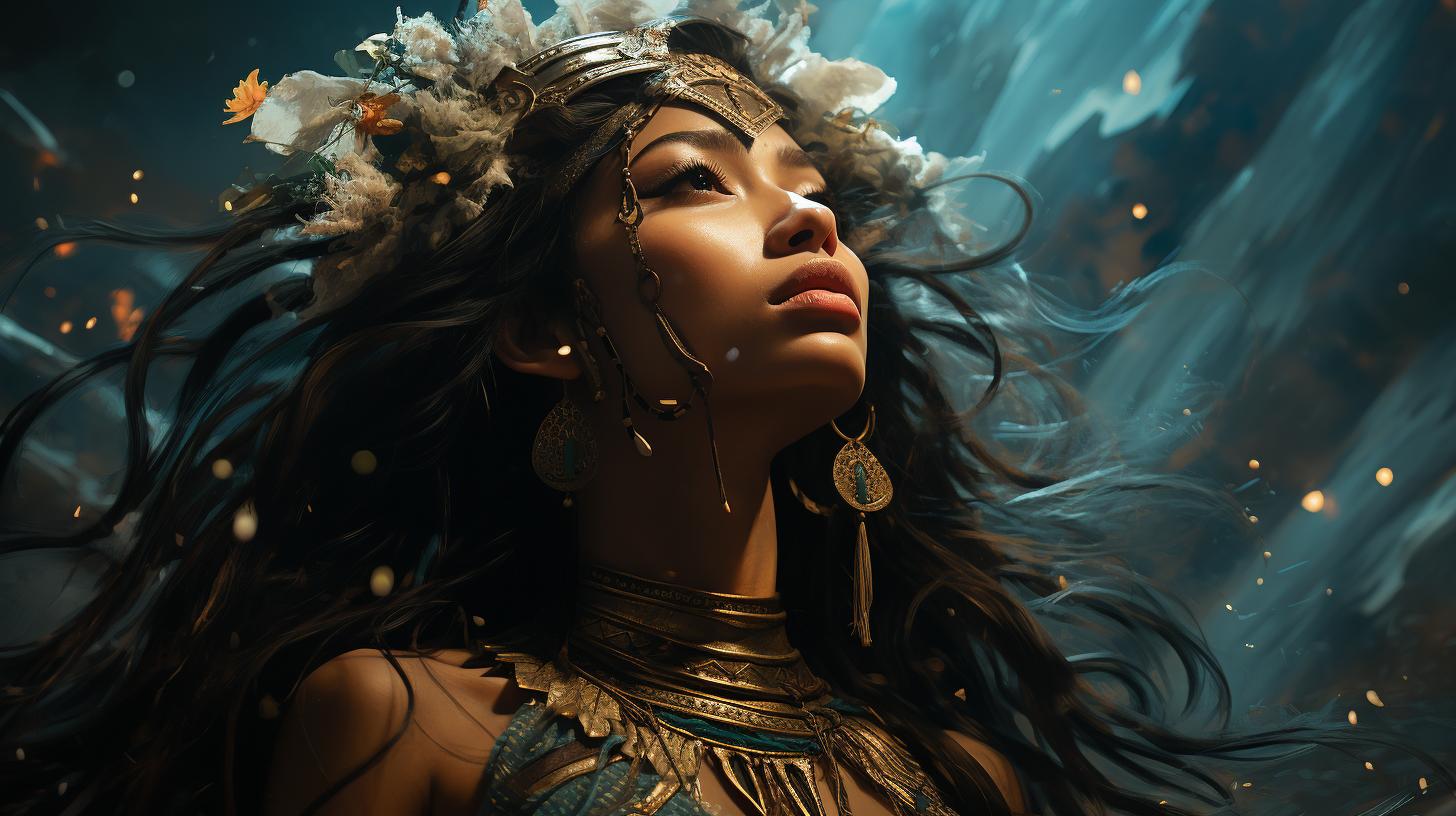
Mayari, the mythical Filipino moon goddess, holds a significant place in Philippine mythology. Legends surrounding her origins and her role as the goddess of the night and the moon contribute to her enchanting presence.
In the realm of Filipino goddesses, Mayari stands out with her resilience and beauty, despite the injury she endured in a battle with her brother, Apolaki. The Cortejo de Mayari tradition, honoring the moon goddess, adds to the rich cultural tapestry of Filipino mythology.
Mayari’s distinctive appearance and symbolic weaponry reflect her status as a goddess of war, while her family connections and multifaceted roles showcase the depth of her significance. Mayari’s legacy continues to inspire individuals to embrace their uniqueness and determination.
Mayari: The Mythical Filipino Moon Goddess
Mayari, the enchanting figure in Philippine mythology, holds a significant role as the goddess of the night and the moon. Exploring the origins and legends surrounding Mayari unveils her mythical power and captivating presence.
Origins and Legends Surrounding Mayari
The stories of Mayari’s origins and lineage vary across different legends. However, they all converge on one aspect—the extraordinary beauty that distinguishes her as the most stunning goddess among all. Despite the diversity in her origin tales, Mayari’s exceptional charm remains a unanimous trait.
Mayari and Her Role as Goddess of the Night and the Moon
Mayari’s divine responsibility encompasses ruling over the night and the moon. She stands alongside her brother Apolaki, who governs the daytime. Although Mayari’s luminosity is diminished due to the loss of her eye in a battle, she continues to shine as a symbol of strength and beauty.
Mayari’s reign as the goddess of the night and the moon serves as a testament to her grace and power. With her captivating presence, she embodies the allure and essence of the moon, illuminating the world during the night and captivating hearts with her enigmatic aura.
Embark on a journey delving deeper into the mythology surrounding Mayari, discovering her struggles, victories, and the traditions that honor this mythical deity.
Filipino Goddesses in Philippine Mythology
The rich mythology of the Philippines is filled with intriguing deities and mythical figures. Within this cultural tapestry, Filipino goddesses hold a significant place. These powerful and enigmatic goddesses play vital roles in shaping the mythological landscape of the Philippines.
Mythological Deities in Philippine Culture
Philippine culture is rich with mythological deities that embody various aspects of life, nature, and spirituality. These deities are revered and worshipped, often associated with different elements such as the moon, sun, stars, and natural phenomena.
Mayari’s Place Among Other Filipino Goddesses
Mayari, the Filipino moon goddess, stands out among the pantheon of Filipino goddesses. Her role as the goddess of the night and the moon grants her a unique position of power and influence.
Yet, she is also connected to other divine figures, such as Hanan (the deity of dawn), Adlaw (the god of the sun), and Tala (the goddess of stars), creating a familial bond among these celestial beings.
Mayari’s distinctiveness lies in her various domains, including beauty, strength, and war. Her multifaceted nature sets her apart from other Filipino goddesses, emphasizing her significance and the impact she has on the mythological narrative.
- Mayari’s mythical realm of the night and the moon
- Mayari’s connection to other celestial deities
- Mayari’s role as a goddess of beauty, strength, and war
Exploring the mythology of Filipino goddesses opens a captivating window into the mystical world of Philippine culture, allowing us to appreciate the diverse and fascinating nature of these powerful figures.
The Story of Mayari and Her Brother Apolaki
In the fascinating realm of Philippine mythology, the story of Mayari and her brother Apolaki captivates with its mythical battles and enduring strength. This tale revolves around a celestial clash for dominion over the Earth.
The Mythical Battle Between Mayari and Apolaki
Legend recounts a fierce dispute between Mayari and Apolaki, as they vied for rulership. In the midst of their fiery altercation, Apolaki struck Mayari, causing her to lose one of her radiant eyes.
However, after realizing his mistake, Apolaki offered an apology and they forged an agreement to co-rule. Thus, Mayari became the deity of the night and the moon, while Apolaki presided over the daytime.
Mayari’s Resilience and Beauty Despite her Eye Injury
Mayari’s enduring allure shines even after her injury. Despite the diminished radiance of her moonlight due to the loss of her eye, she remains renowned in Filipino mythology as the most dazzling goddess.
Mayari stands as a symbol of strength and beauty, showcasing that even in the face of adversity, one can emanate resilience and grace.
Mayari’s mythical tale with Apolaki unveils the complexities of sibling rivalry and the power of forgiveness.
Her unwavering strength and unmistakable beauty resonate through the realms of Philippine mythology, leaving a lasting impression on generations to come.
The Cortejo de Mayari: A Tradition Honoring the Moon Goddess
The Cortejo de Mayari is a cherished tradition that pays tribute to the revered Filipino goddess of the moon.
This annual event takes place during the night of the full moon, celebrating Mayari’s mystical powers and significance in Philippine mythology.
Understanding the Cortejo de Mayari Tradition
The Cortejo de Mayari is a deeply rooted cultural practice that involves the act of courtship under the enchanting moonlight. During this tradition, suitors present sampaguita flower corsages, a fragrant Filipino bloom, to the woman they are pursuing.
If she accepts the corsage, it signifies her acceptance of the suitor’s affection. The full moon serves as a witness to the couples’ love and commitment.
Symbolism and Significance of Offering Sampaguita Flower Corsages
The sampaguita flower holds profound symbolism in the Cortejo de Mayari tradition.
It represents purity, devotion, and everlasting love. By presenting the sampaguita corsage, suitors express their admiration and affection towards the woman they seek to court. The significance lies in the fragrant blossoms serving as a beautiful symbol of their intentions and emotional connection.
The Cortejo de Mayari tradition is a fascinating testament to the enduring reverence for Mayari and the moon’s influence in Philippine culture. It highlights the intertwining of love, nature, and mythology, creating a harmonious celebration of Filipino heritage and romantic rituals.
Mayari’s Distinctive Appearance and Symbolism
Mayari, the captivating Filipino moon goddess, is not only known for her mythological significance but also for her distinctive appearance and symbolic elements. These aspects further enhance her portrayal as a powerful deity deserving of awe and reverence.
Mayari’s Adornments and Weaponry
Mayari’s attire is a sight to behold, adorned with multiple layers intricately embellished with vibrant beads. Her outfit reflects her status and power as a goddess, showcasing her beauty and strength.
Alongside her enchanting appearance, Mayari wields notable weapons, including a yantok, a long stick measuring up to thirty-six inches, and a “baston” – a shorter stick ranging from twenty-four to twenty-eight inches in length.
These weapons exemplify her role as a deity of war and her prowess in battle.
The Symbolic Scars and Tattoos of the Moon Goddess
Mayari’s symbolic scars and tattoos hold deep meaning in her portrayal. Her tattered eye, a mark of her battle with her brother Apolaki, represents her resilience and perseverance in the face of adversity.
This scar symbolizes her strength and serves as a reminder of her indomitable spirit. Additionally, her tattoos signify her connection to her divine nature and embody the struggles she has faced throughout her mythical existence.
Together, these physical attributes epitomize Mayari’s enduring power and determination.
Mayari in Tagalog and Philippine Mythology
Mayari, the fascinating Filipino moon goddess, holds a prominent place in Tagalog and Philippine mythology. Her familial connections and various depictions exemplify her significance in these mythological traditions.
Mayari’s Family in Tagalog Mythology
According to Tagalog mythology, Mayari is the daughter of Bathala, the Supreme God, and is the sibling of Hanan, the deity of dawn, Adlaw, the god of the sun, and Tala, the goddess of stars.
Some variations even present Tala as Mayari’s daughter. These family connections highlight the interconnectedness of gods and goddesses within the mythological pantheon.
Varied Depictions of Mayari in Different Stories
Mayari’s portrayal in different stories can vary, accentuating the fluid nature of Philippine mythology. While her beauty and role as the ruler of the night and the moon remain consistent, the specific details of her appearance and legends can differ.
These diverse depictions add depth to her character, showcasing the multifaceted nature of Mayari.
Mayari’s significance as a moon goddess and her various depictions in Tagalog and Philippine mythology shed light on the captivating and ever-evolving folklore of the region.
The Multifaceted Roles of Mayari in Philippine Mythology
Mayari, the mythical Filipino moon goddess, embodies various domains within Philippine mythology, symbolizing different aspects of power and compassion. Her roles encompass those of war, beauty, and strength, making her a complex and revered deity.
Exploring Mayari’s Domains of War, Beauty, and Strength
Mayari holds a prominent position as the goddess of war in Philippine mythology. She represents the revolution, hunting, and weapons, highlighting her fierce and formidable nature as a warrior. Through her roles in battles and revolutions, Mayari embodies the strength, determination, and tenacity of the Filipino spirit.
Beyond her role as a deity of war, Mayari is also celebrated as the symbol of beauty. Her exceptional appearance, despite the scars and tattos adorning her body, signifies the resilience and enduring allure found within the Filipino culture.
Mayari’s beauty is not limited to physical attributes; it also represents the inner strength and grace that Filipinos strive to cultivate.
Additionally, Mayari personifies strength on multiple levels. She embodies physical strength in battles and revolution, demonstrating her authority and power.
However, Mayari’s importance extends beyond physical prowess. She represents the inner strength, resilience, and compassion that Filipinos cultivate within themselves. Mayari serves as a reminder of the fortitude and compassion individuals possess to overcome challenges and make a positive impact in the world.
Mayari as a Symbol of Inner Strength and Compassion
Mayari’s multifaceted roles in Philippine mythology extend beyond war and beauty. She epitomizes the virtues of inner strength and compassion, serving as an inspiration for individuals to embrace their inner power and follow their own paths with resolute determination.
Mayari’s story encourages people to show compassion towards others and uplift those around them, fostering a sense of unity and understanding within the Filipino community.
As a revered deity in Philippine mythology, Mayari’s representation of war, beauty, strength, and compassion cultivates a deep sense of pride and admiration among Filipinos.
Her multifaceted roles serve as a guiding force, empowering individuals to embrace their unique qualities and contribute to a greater collective narrative of resilience and compassion.
The Evolution of Filipino Mythology and Mayari’s Legacy
The rich tapestry of Filipino mythology has evolved over time, shaped by the dynamic interplay of oral traditions and cultural influences.
The fluid nature of Filipino mythology allows for the adaptation and incorporation of new stories and beliefs, reflecting the ever-changing landscape of Philippine culture.
Fluid Nature of Filipino Mythology and Oral Traditions
Filipino mythology has been primarily transmitted through oral traditions, making it susceptible to variations and different interpretations.
Stories about Mayari and other deities may differ from region to region and among different communities, adding layers of complexity and richness to Philippine folklore.
Influence of Spanish Colonization on Filipino Mythology
The arrival of Spanish colonizers in the Philippines introduced elements of Christian mythology, blending with and influencing the existing indigenous beliefs.
While some of the Spanish myths were absorbed into Filipino folklore, the essence and significance of figures like Mayari remained deeply rooted in Philippine culture.
The legacy of Mayari and the evolution of Filipino mythology serve as a testament to the resilience and adaptability of the Filipino people.
These myths continue to shape the collective identity and cultural fabric of the Philippines, inspiring generations to connect with their heritage while embracing the ever-changing landscape of their mythology.
Embracing Uniqueness and Determination: Mayari’s Inspirational Legacy
Mayari, the mythical Filipino moon goddess, leaves an enduring legacy that inspires individuals to embrace their uniqueness and determination.
Her power and beauty as an iconic deity resonate through generations, embodying the strength that every individual possesses within themselves.
Mayari’s Power and Beauty as an Iconic Deity
Mayari stands as an emblem of power, beauty, and resilience in Philippine mythology. As the goddess of the night and the moon, she exudes an ethereal aura that captivates all who encounter her presence.
From her striking appearance to her role as a warrior goddess, Mayari emanates a sense of grace and strength that leaves a lasting impression.
Her multifaceted nature, balancing the roles of a ruler, warrior, and symbol of inner strength and compassion, showcases a depth that reflects the complexities of human existence.
Mayari’s celestial influence and unwavering determination make her an iconic figure to be revered and emulated.
Encouragement to Embrace Inner Power and Persevere
Mayari’s inspirational legacy urges individuals to recognize and tap into their own inner power. Her story teaches us that despite challenges and setbacks, resilience and determination can lead to triumph. Mayari’s battle with her brother, Apolaki, and her unwavering strength and beauty despite her eye injury reflect the importance of embracing one’s uniqueness and persevering through adversity.
Through Mayari’s example, we are encouraged to embrace our own individuality, harness our inner strength, and pursue our dreams with unwavering determination. Mayari’s legacy transcends time, serving as a powerful reminder that we all possess the strength and grace needed to overcome obstacles and achieve greatness.
Mayari’s inspirational legacy showcases the tremendous power that lies within each of us, urging us to embrace our own uniqueness and strive for greatness in all aspects of life. As we navigate our personal journeys, we can find solace and motivation in Mayari’s story, empowering us to chase our dreams, overcome obstacles, and celebrate our individuality.
.

